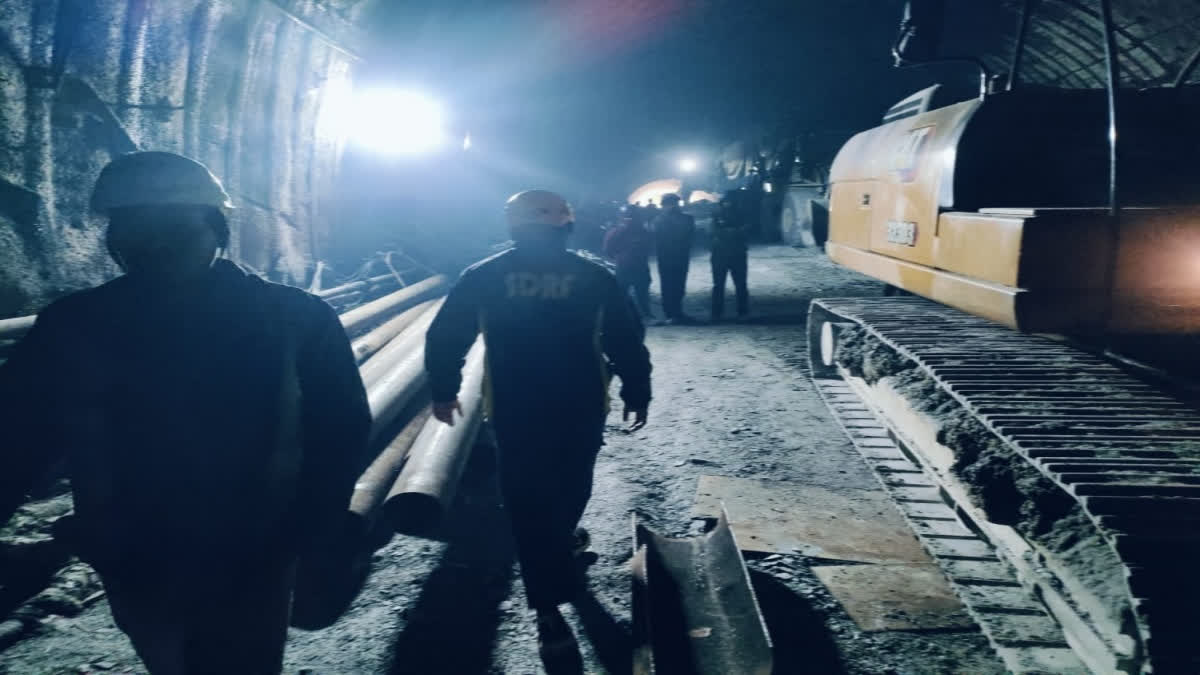Dehradun/Haridwar: As rescuers in Uttarakhand race against time to rescue around 40 workers, who are still trapped inside a collapsed tunnel, an ex-geologist of Wadia Institute of Himalayan Geology raised a few questions about dangers, precautions and safety measures while constructing such a tunnel in the fragile ecological condition of the Himalayan state.
Geologist Sushil Kumar said that it was a natural disaster, but while carrying out construction work in an area like Uttarakhand, the executing agencies should have paid more attention to all the important aspects while going ahead with such a venture.
"The logic behind making a long tunnel of about 4,531 metres between Silkyara and Polgaon (Barkot) on the Yamunotri National Highway was to reduce the distance between Yamunotri and Gangotri Dham by 25 kilometres. However, till now 2,340 metres of tunnel have been constructed from the Silkyara side and 1,750 metres of tunnel from Barkot side. The tunnel from 270 metres from the Silkyara side got blocked due to debris falling in about a 30-metre area. This factor resulted in the mishap and trapping of miners working in this tunnel," Kumar said.
He continued, "The tunnel is not the first one being built in the country, but you have to take note of the fact that the Himalayan region of Uttarakhand is made up of soft rock. Due to this, special attention has to be paid to development works in hilly areas."
According to him, when tunnels are constructed in other places, agencies do not pay much attention to the pass block, but in the Uttarakhand context, there is a need to pay attention to the pass block. It is because of the fact that in case any incident occurs, the worker can be immediately evacuated safely.
Kumar further said that if a tunnel is built in mountainous areas with soft rock formations, agencies must take note of some spots which are dependent on some support. In such a situation, as soon as a spot is removed, the earth caves in and the tunnel gets blocked. A similar incident has happened in the Uttarkashi tunnel, he said.
"When a tunnel is constructed, all necessary precautions are usually taken but important for agencies is to re-check the stress level at every step. Many lessons can be learnt from this accident. I hope hard lessons learnt from the mishap will help us to be extra cautious before we plan future tunnel construction," Kumar added.
At the same time, the geologist said the Himalayas of Uttarakhand are made of soft rock. There is a need to give serious thought to stabilising the unstable soil and rock during the time of cutting roads in times of tunnel construction. "These ventures are fraught with danger so nothing should be done in haste," Kumar pointed out. Uttarakhand, which has witnessed rapid developmental activities in recent times, is witnessing climate change. The fragile ecology is exposed to human interference which compounded the problem.



